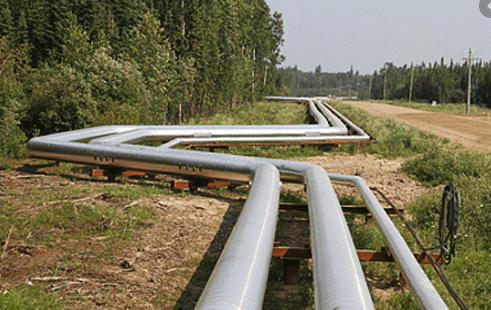somacast
Mechanical
- Aug 10, 2010
- 88
Hello,
The actual case is that some LPGs are being pumped through long pipelines running above ground mostly, and has some buried sections under roads, runs like that for about 20 kilometers, so the majority of the pipelines are exposed, its been there for many years and being well maintained and provided the required CP, the pipes are rested on sleepers every 10 meters approximately, and anchored every 200 meters approximately, and also anchored before and after every road buried sections.
The issue is that the pipes (6 inch and smaller pipes) are expanding freely, and snaking up in shape, such that they hit each other at some points, I was reading through B31.8 but I think I was unable to locate a criteria, I have seen other pipes in field (crude oil pipes) which are provided with a stopper ring surrounding the pipe welded to each sleeper support with about 1 inch on each side gap only, but is it safe to restrict the pipes like that?
The system and plant have been in place for over 29 years now, I have attached examples of some of the excessive locations, the original layout is zigzagged to accommodate expansions but it doesn't seem to be good enough, they try to align them every now and then but they do move again .. also I have attached a small section from google maps to show the zigzag design used.
any thoughts , advises please?
Thanks
The actual case is that some LPGs are being pumped through long pipelines running above ground mostly, and has some buried sections under roads, runs like that for about 20 kilometers, so the majority of the pipelines are exposed, its been there for many years and being well maintained and provided the required CP, the pipes are rested on sleepers every 10 meters approximately, and anchored every 200 meters approximately, and also anchored before and after every road buried sections.
The issue is that the pipes (6 inch and smaller pipes) are expanding freely, and snaking up in shape, such that they hit each other at some points, I was reading through B31.8 but I think I was unable to locate a criteria, I have seen other pipes in field (crude oil pipes) which are provided with a stopper ring surrounding the pipe welded to each sleeper support with about 1 inch on each side gap only, but is it safe to restrict the pipes like that?
The system and plant have been in place for over 29 years now, I have attached examples of some of the excessive locations, the original layout is zigzagged to accommodate expansions but it doesn't seem to be good enough, they try to align them every now and then but they do move again .. also I have attached a small section from google maps to show the zigzag design used.
any thoughts , advises please?
Thanks

